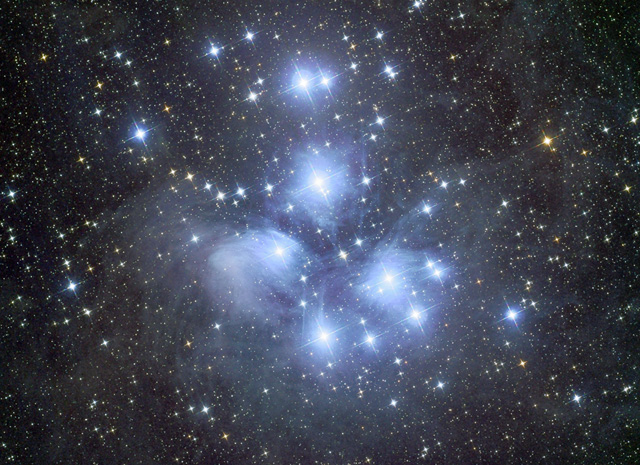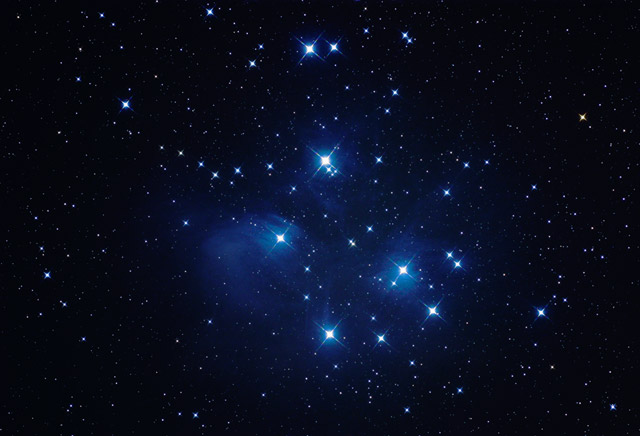|
Time Travel Research Center © 2005 Cetin BAL - GSM:+90 05366063183 - Turkey
/ Denizli |
|||
|
|
|||
|
M45
|
||
|
TAURUS - OPEN CLUSTER - MAGNITUDE 1.5 |
|||

M45 - THE PLEIADES IN TAURUS
|
About this Object: |
|
The brightest and most
majestic open cluster in all the sky! The Pleiades has been known for
centuries and is referenced in ancient documents, especially the Bible,
due to its uncomparable beauty. Known as the "seven sisters," a
reference to the brightest of its stars, the Pleiades can be seen with
the naked eye in even the worst of night skies, taking on the shape of a
small dipper. In fact, many beginning observers often confuse this
object with the Little Dipper itself. The entire cluster covers an area
of the sky exceeding 2 degrees, or the equivalent of 4 of our full moons
in width. The entire cluster looks best in smaller aperture scopes
where the field of view can put all of the Pleiades in the eyepiece. Simply
put, there's not a better small scope object in the heavens! |
Location:
Comanche Springs, 3RF
dark sky site near Crowell, Texas
Seeing:
9/10
Transparency: 8/10
Temperature: 35 degrees F
Date: December 11, 2004
Scope/Mount: Tak FSQ-106 @ f/5 and Tak NJP mount
Camera: SBIG STL-11000M astro CCD camera
Exposure Info: LRGB image; 60:60:80 RGB with synthetic
luminance (5 minute subexposures all unbinned)
Processing
Information:
Calibration, Registration, DDP,
and RGB channel combine in MaxIm DL 4. LRGB combine, cropping, color balance,
levels/curves, sharpening, and noise removal (despeckle and gaussian blur)
in Photoshop CS.
Exposure Notes: This was a first light image with the SBIG STL-11000M camera. Conditions were especially good this night. Processing was difficult because I wanted to show the background dust. I largely succeeded, though I should have taken the time for pure luminance. Diffraction spikes were created with a string affixed to the dewshield.
Previous Attempts:

Location:
Ballauer Observatory in
Azle, Texas
Seeing:
7/10
Transparency:
6/10
Temperature: 35 degrees F
Date:
January 19, 2004 acquired;
November 21, 2004 reprocessed
Scope/Mount: Tak FSQ-106 @ f/5 and Celestron CGE mount
Camera: Canon Digital Rebel
Guiding: SBIG ST-7e on the AP 80/900mm guidescope
Exposure Info: 8 x 5 minute images
Processing
Information:
All images aligned and combined
with a median combine in Images Plus. Photoshop CS was used for dark frame
calibration, image cropping, manual gradient removal, saturation increase,
levels, curves, sharpening and noise reduction.
Exposure Notes: This is a first light image with the new Canon Digital Rebel. The file was saved as a Large JPEG instead of the RAW file format. Thus, lots of information was lost prior to processing. The dark frame calibration was a poor attempt using a single dark frame rather than a master, multi-image dark frame. Diffraction spikes were created with a string affixed to the dewshield.
Yıldız Kümeleri Resimleri Galaxy Resimler Nebula Resimler
Copyright(c) 2003 - 2005 Cetinbal All rights reserved.